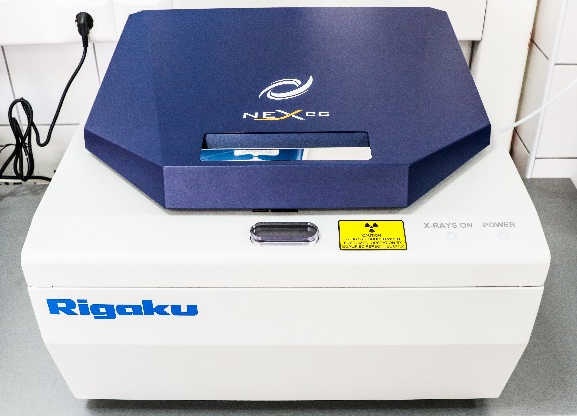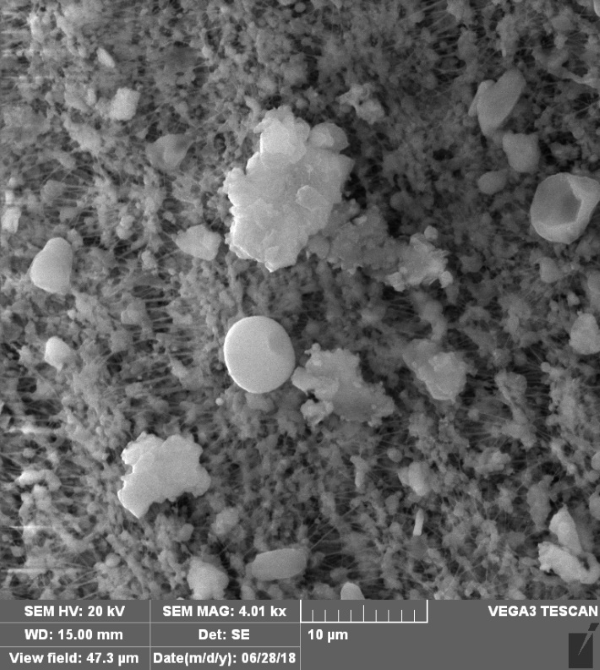Interview with Prof. Afrodita Zendelska, PhD, associate professor and vice dean for teaching, of the Faculty of Natural and Technical Sciences, at University Goce Delchev in Shtip.

University Goce Delchev in Shtip is the only academic institution in the country that has an accredited laboratory (AMBICON) in which the sources of air pollution can be identified i.e., who pollutes the air. Our guest is prof. Afrodita Zendelska, PhD, who not only acts as an associate professor and vice dean for teaching at the Faculty of Natural and Technical Sciences, University “Goce Delchev” – Shtip, but she also actively participates in pollutants analyses of.
Why this kind of a laboratory was established at the University and what is its role?
The need for continuous upgrading of students knowledge in all study cycles, as well as of professors, depends on the opportunities provided by their faculty/university. That is why University Goce Delchev, since its foundation, strives to create modern scientific research centers in which all interested students and professors will have the opportunity to research and realize their ideas.
One of these scientific research centers is the AMBICON laboratory, which includes: a department for analysis and testing of materials, and an environmental control department. The story of this laboratory begins in 2007 when, with only a few instruments, the professors of the Faculty of Natural and Technical Sciences managed to reach some significant results from their research. In 2015, with a significantly larger number of instruments, the laboratory received accreditation ISO 17025, and today, in 2023, we already have a laboratory with many accredited methods and state-of-the-art equipment that we can boast of and point out that we successfully stand side by side with modern laboratories from the Balkan and European areas. I can freely state that almost every year the list of laboratory equipment is replenished. Speaking about equipment, the X-ray fluorescence spectrometer, purchased in 2021, and the scanning electron microscope, purchased in 2022, are one of the most significant instruments with which the analysis and testing department was equipped in the last two years.
The purpose of this equipment is wide, in addition to being used for air quality testing and identification of pollution sources, it is also used for analysis and testing of various materials and has applications in almost all scientific research areas.
I, as one of the experts associated in the materials analysis and testing department at the AMBICON laboratory, use most of the equipment we have. To find a solution to a certain problem, not only one instrument is enough, but a whole series of instruments. Not only we combine the equipment in our daily activities, but we also combine our knowledge, we work as a team, because teamwork always gives the best results.
What do these “wonder instruments” measure?
The first of the mentioned, the X-ray fluorescence spectrometer, is used to obtain the concentration of over 30 elements that are present in the air that we breathe. What makes this instrument so special is that the bottom detection limit is very low and is ideal for testing the concentration of these elements in the air. We have had similar instrument in the AMBICON laboratory since 2011 and we started the first tests with it. But as technology advances, so do we renew our equipment with new and more sophisticated ones, to obtain more accurate and precise results.

The same is the case with the second instrument, the scanning electron microscope, which we have recently renovated into a new and much more advanced device on which we are especially proud of.
A scanning electron microscope, which we’ve had around since 2012, is used to study the morphology and chemical composition of a variety of materials. By upgrading this instrument with coating, we are able to examine in high vacuum any kind of samples and achieve high magnifications (> 20,000 x).

The new scanning electron microscope has been upgraded with a system for automatically changing the positions of the filters and, under pre-defined conditions, enables automatic mapping i.e., detection of a certain type of particles. This enables a more precise and detailed samples analysis.

Tell us a bit more about the process of detecting the sources of air pollution.
To be able to successfully identify the sources of air pollution, requires extensive testing, and large number of people and instruments. One of the very important factors that influence the results is air sampling, more precisely, obtaining filters with an adequate concentration of particles that represent the air in a certain location. This is done in the environmental control department following strict rules and using our latest technology.
Another important factor is obtaining the chemical composition of the particles caught on the filters. This procedure is carried out in several successive steps, several instruments are used, one for obtaining water-soluble ions, another for determining the concentration of elemental carbon, and a third for obtaining the concentration of about 30 metals.
Obtaining accurate and precise results is very important so that we can obtain a model that will fit properly to the tested site. Last, but not least, is the modeling, which provides information on possible sources of air pollution.
We have done several such investigations (tests, research) and I would like to highlight the investigation of the source of pollution in the city of Skopje. We are currently working on testing the air quality in five cities in Macedonia. We are also planning to do a study to investigate the source of pollution for each of the surveyed cities individually. Since I already mentioned that we have new and sophisticated equipment, we plan to include some of it in the new research in order to obtain even more accurate results. We want to classify the particles according to their size and detect which elements are present in each of the classes.

Who works in the laboratory, is it only for staff and professors or is it used by students as well?
The laboratory is open to all our professors and students. Students from the first, second and third cycle of studies (undergraduates, masters, and PhD) can conduct their research in our laboratory completely free of charge. Starting from easy and simple experiments to some more complex research.
Our students have that opportunity to be involved and actually work on projects. These students pass several months of training, then work under mentorship and finally are involved in working on some simpler methods. This opportunity gives the students to acquire the basis of the laboratory work, and in addition to the experience to get financial benefit.
The work with the more sophisticated equipment remains only for the professional staff, because not everyone can work on each instrument, but requires longer training and dedication.




